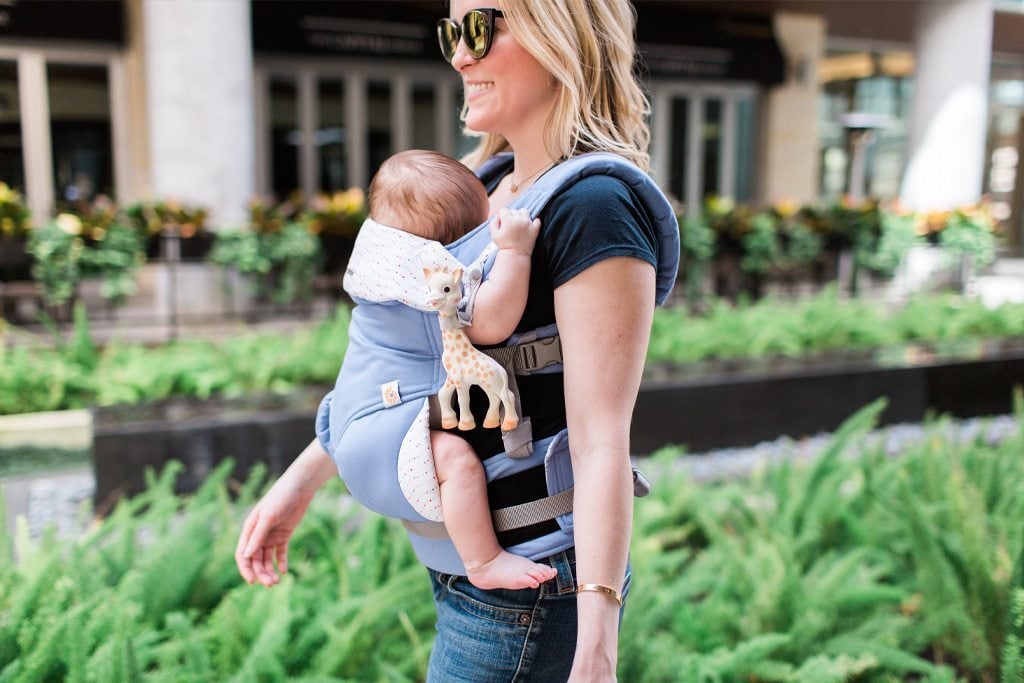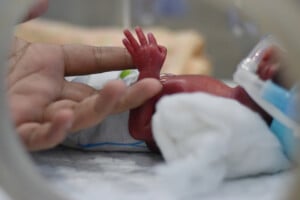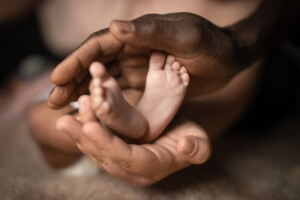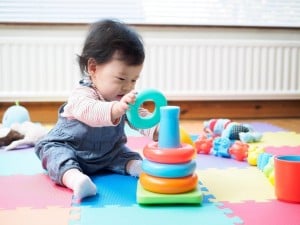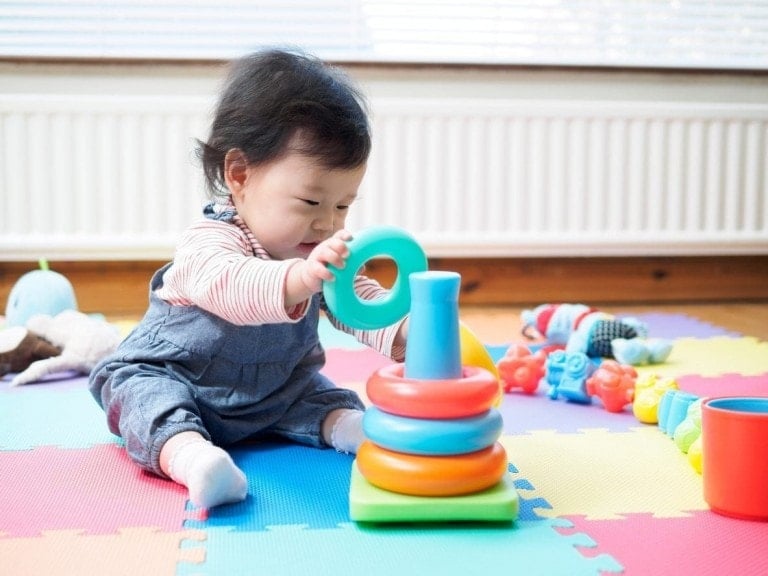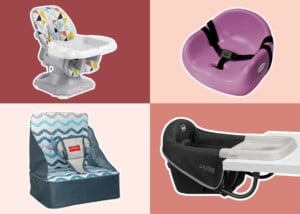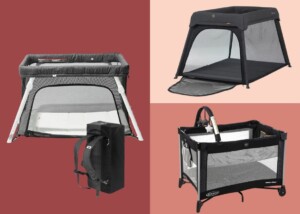Finding out that you are expecting and bringing home your newborn are some of the most memorable moments of your entire life. It’s an exciting time, and there is so much to learn! Hip Health is an important area of a baby’s health that is often overlooked or misunderstood. Loose hip joints are the most common abnormality in newborns and affect approximately one in ten babies.1 This may not be easy to detect and usually goes away during the first few weeks of life. However, loose ligaments around the hip can lead to complete hip dislocation, continuing joint instability, or poor hip socket development. This range of hip abnormalities is called Hip Dysplasia. Hip dysplasia often goes untreated because it can be challenging to detect.
The most important takeaway new parents should have is that hip dysplasia is often curable without surgery if discovered within the first six months of life. Educating oneself on this common condition can save your child pain and suffering later in life when surgery may be the only solution.
4 Facts Doctors Wish New & Expecting Parents Understood About Baby Hip Health
1. The Risk Factors of Hip Dysplasia
Hip dysplasia is an invisible birth abnormality. Unlike a cleft palate or a club foot, hip dysplasia does not present itself until the baby is examined. And even then, some cases are simply not detected. To be better informed, expectant parents should be aware of the risk factors that could result in hip dysplasia:
- Is your baby a first-born female?
- Was it a breech birth?
- Is there a family history of hip dysplasia?
If any or all of these conditions exist, insist on a full hip examination at birth and every well-baby checkup in baby’s early months. If hip dysplasia is diagnosed in the first six months of birth, it can be treated non-surgically. An ultrasound by an experienced radiologist or orthopedist is often the best way to get a definitive diagnosis.
2. The Signs of Hip Dysplasia as Baby Grows
Since hip dysplasia rarely causes pain in babies and it doesn’t prevent them from walking at a normal age, here are signs that parents might notice:
- Asymmetry: Asymmetrical buttock creases in infants can suggest hip dysplasia. As with a hip click, an ultrasound or X-ray will need to be done to determine whether the hips are normal or not.
- Hip Click: Hip clicks and pops can sometimes suggest hip dysplasia. However, a snapping sound can occur in normal hips due to developing ligaments in and around the hip joint.
- Limited Range of Motion: Parents may have difficulty diapering because the hips can’t fully spread.
- Swayback: A painless but exaggerated waddling limp or leg length discrepancy are the most common findings after learning to walk.
3. That Safe Swaddling is Essential for Hip Health
Did you know that not all baby swaddles are Hip Healthy? Any swaddle that wraps baby’s legs straight or pressed together does not support proper hip development. This can cause baby to develop post-natal hip dysplasia . . . a condition that cannot be detected at birth.
Proper swaddling to ensure healthy hip development should only feature a tight wrap on the baby’s upper body and a roomy sac-like design on the lower half of the baby’s body. Parents should look for a swaddling garment with a generous bottom that allows the baby’s legs to bend up and out at the hips. This position allows for the natural and proper development of the hip joints.
It’s especially important to allow the hips to spread apart and bend up post-natally; a hip-healthy swaddle garment will permit this. In the womb, the legs are in a fetal position, with the legs bent up across each other. Sudden straightening of the legs to a standing position can loosen the joints and damage the soft cartilage of the socket.
4. There is a Hip-Healthy Way to Use a Baby Carrier, and It Starts with the Letter “M.”
One of the most important things parents need to remember is to use a baby carrier that allows the hips to fall or spread naturally apart to each side, with thighs and hips supported and knees bent.
Think of your baby as a jockey or frog, and she will have free movement of the hips resulting in natural hip development. When your baby is carried properly, the legs will look like the letter ‘M’ with the buttocks down and the knees up in the inward-facing position. This is most important during the first six months of life, especially if you babywear for long periods.
Why is this position important? Babies spend up to 9 months in the womb in the fetal position, where both hips and knees are bent or flexed. After birth, it takes several months for the joints to stretch out naturally. Parents can support the process by selecting products that encourage healthy hip development.
In a proper carrier, your baby will be in a spread squat position and look like a jockey. Parents need to look for a carrier that allows baby’s legs to be in the “M” position with the thighs spread around the parents’ torso and the hips bent so the knees are slightly higher or level with the buttocks. The carrier should place the child facing inward and provide support from the thighs to the knee.
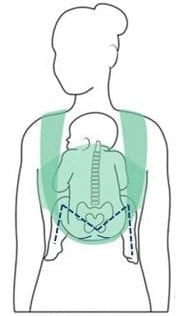
This drawing demonstrates a baby carrier that allows for healthy hip positioning. The baby’s thighs are spread around the mother’s torso, and the hips are bent, so the knees are slightly higher than the buttocks, with the thighs supported and outlined in an “M” sign.
Visit the International Hip Dysplasia Institute online for more information about hip dysplasia and a listing of hip-healthy products acknowledged by IHDI.1
